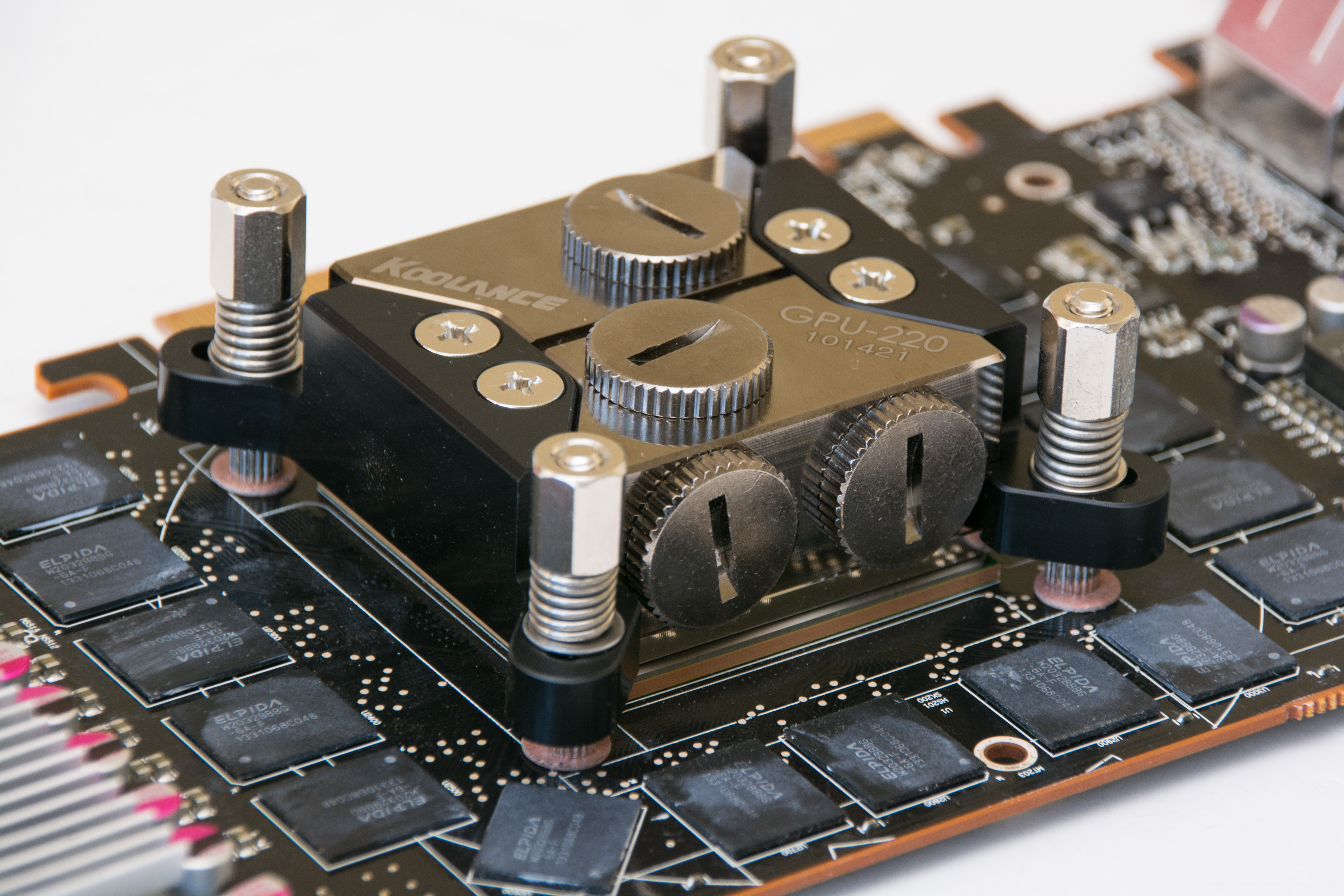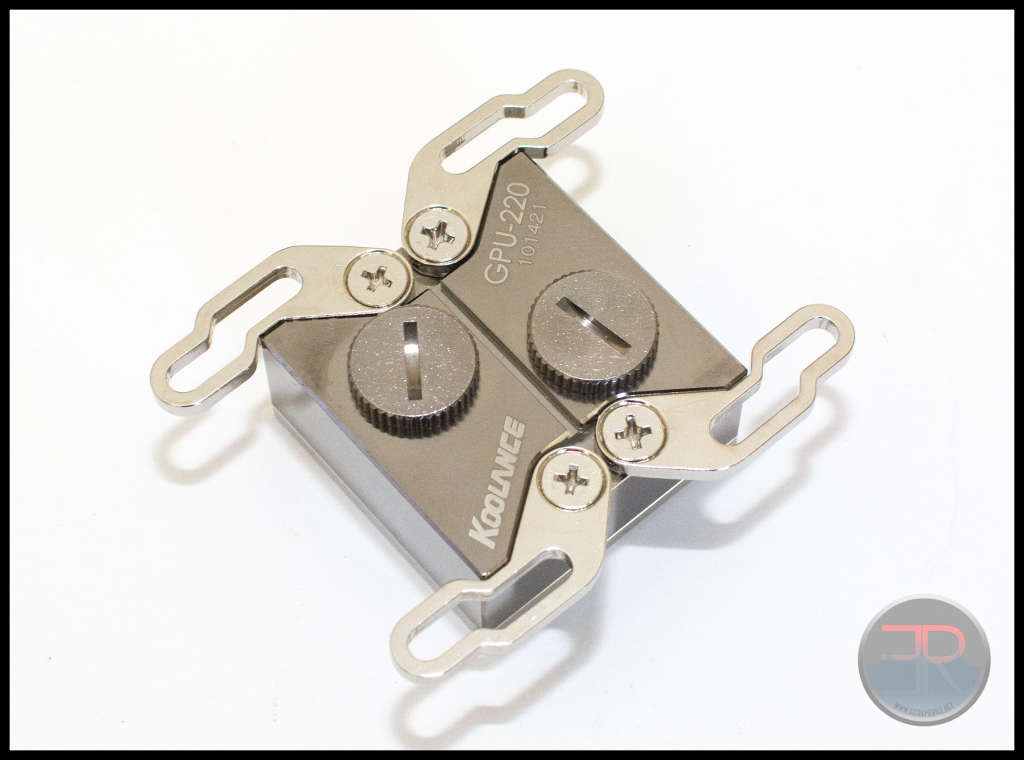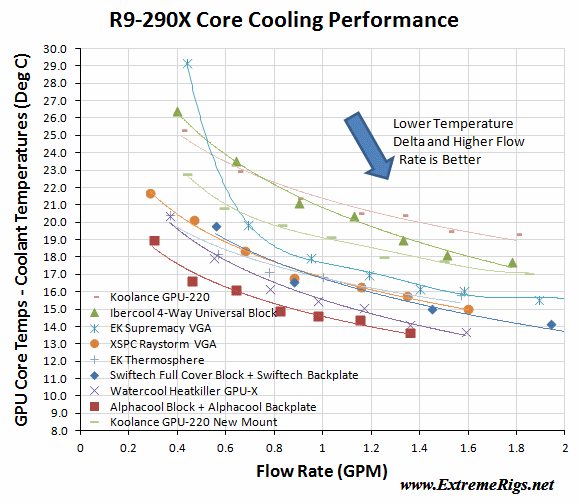If you saw our universal block roundup, you would know that we were not a fan of the Koolance’s GPU-220. While the block itself was nice, the mount gave us zero confidence to tighten it down as much as we normally would. The resultant thermal performance was of course then poor.
Koolance decided to make an improved mount that is more specific for GPUs that could be used instead of the more universally flexible mount. Both will be included in the box going forward. So what has changed? Here’s a shot of the old block:
So the obvious thing would be that the adjustable arms have been removed in favor of a fixed bracket with a slot to allow for variance between GPU mounts: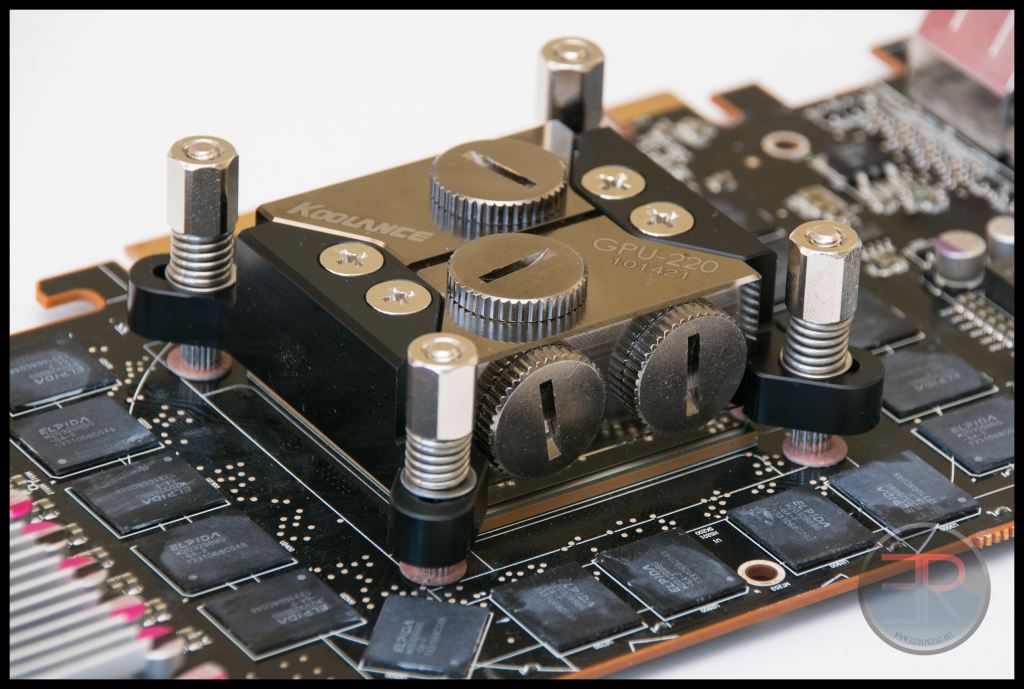 It’s prettier too. However the main difference is in the mount:
It’s prettier too. However the main difference is in the mount:
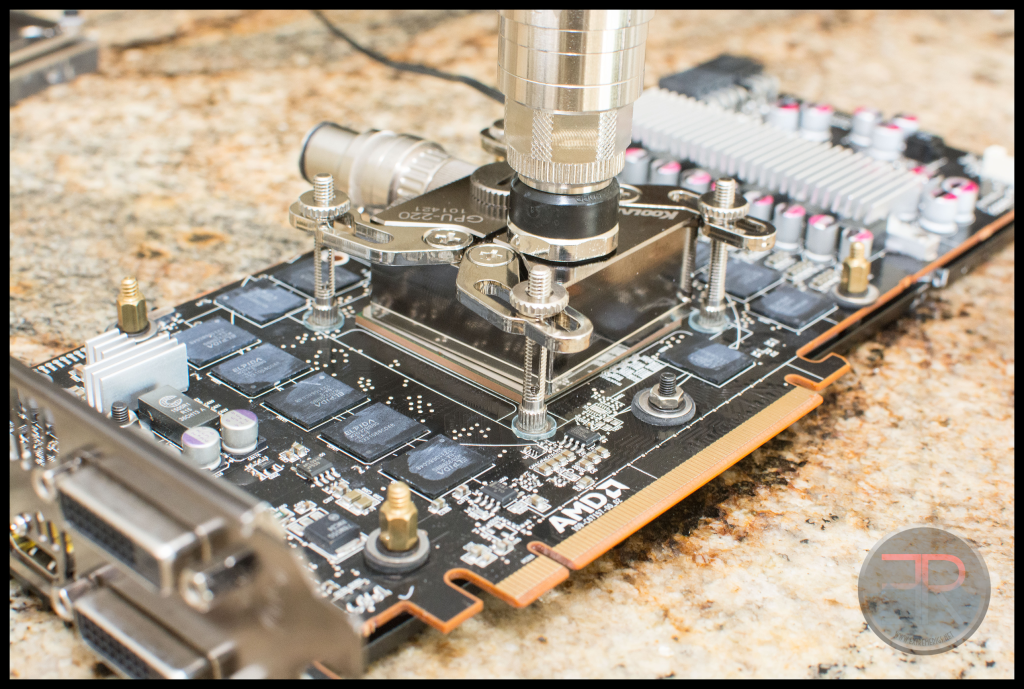 Note that compared to the earlier shot there are no springs, the thumb nuts are small and (not shown) the screws in the back were small and a bit flimsy. All of these weaknesses have been attacked and improved.
Note that compared to the earlier shot there are no springs, the thumb nuts are small and (not shown) the screws in the back were small and a bit flimsy. All of these weaknesses have been attacked and improved.
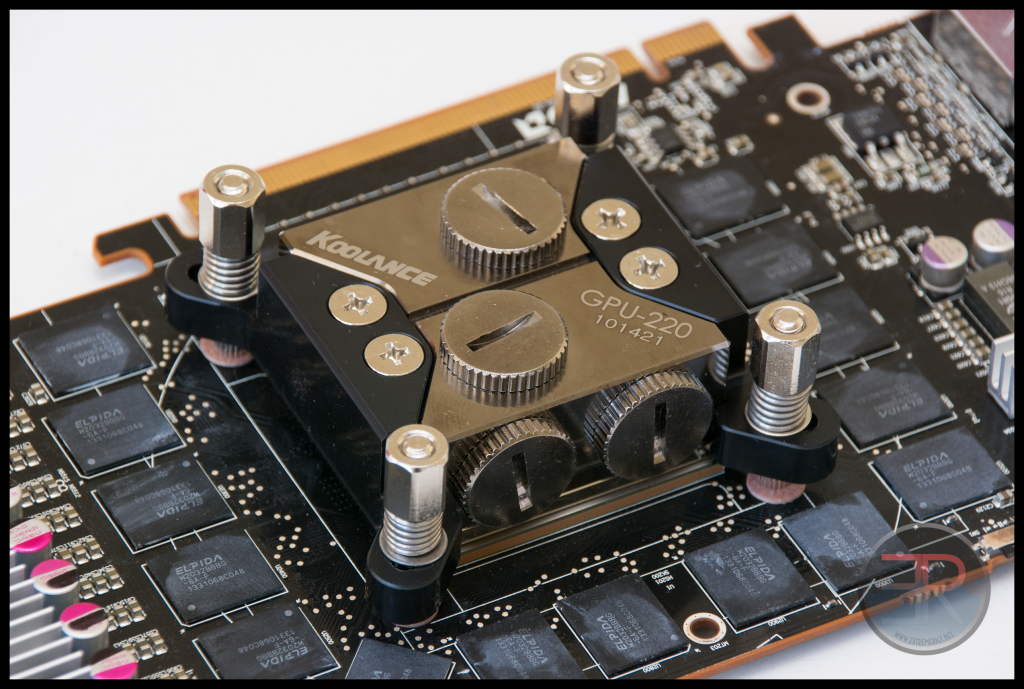
With the old mount we were scared to tighten the block down. The new mount gave us confidence to tighten it very securely. So now that we were confident in the mount it was time to get it on the test bench:
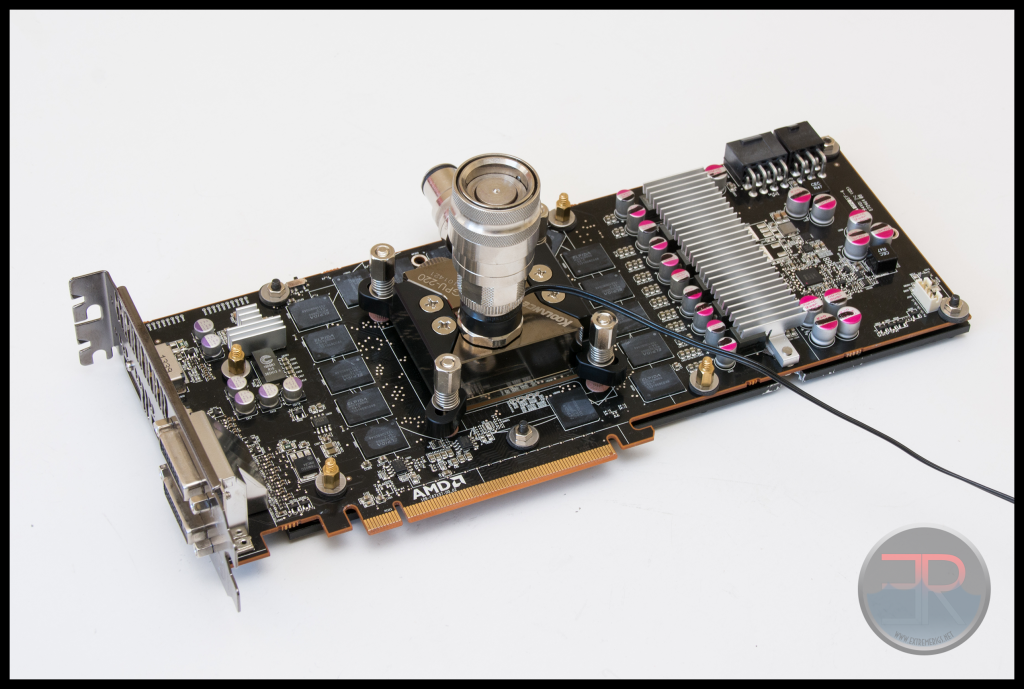
Thermal Testing
Thermal testing was completed in the same style and on the same GPU used in the universal block roundup. Essentially the block is mounted once with MX2 and the TIM is burned in for several hours. After burn in is complete it’s tested over 7 flow points. Each flow point is given ten minutes to settle, and the average core temperature is recorded over 20 minute window sampled every second. The coolant temperature is also measured in the same way. Then the difference between the two is plotted. We measure vs coolant temperature for two reasons – it takes out the effects of flow on the system’s cooling and ambient temperatures are really hard to measure accurately. If you don’t believe me on the latter then go try and do an accurate radiator review and show me repeatable measurements (more on that soon). One mount is used because GPUs aren’t tolerant of many mounts. It should be noted that this means that the margin of error in this testing is fairly high.
The core to coolant data is then plotted vs flow rate. Note that we fix pump settings for each data point here, so each block will have a slightly different flow rate. Higher flow rate therefore correlates to a less restrictive block. So better blocks will have a lower core temperature delta while still maintaining high flow.
Of course with so many lines it’s somewhat hard to read. However the old GPU-220 (light pink) improves it’s performance by an average of 2C to become the light green line. While this improvement is good, we were still hoping for better as it’s still behind the EK, XSPC, Swiftech, Watercool and Alphacool blocks.
Summary
The Koolance GPU-220 with it’s new mount has been improved from being a poor performer with a sketchy mount to an average performer with a great mount. There is now nothing specifically wrong with the block. However it’s cooling still lags a bit behind the competition and at $65 it’s also a bit more expensive than the competition e.g. $55 for the Supremacy VGA. Certainly not a bad block, but still not good enough to claim an award sadly!
Where to buy: PPCS







